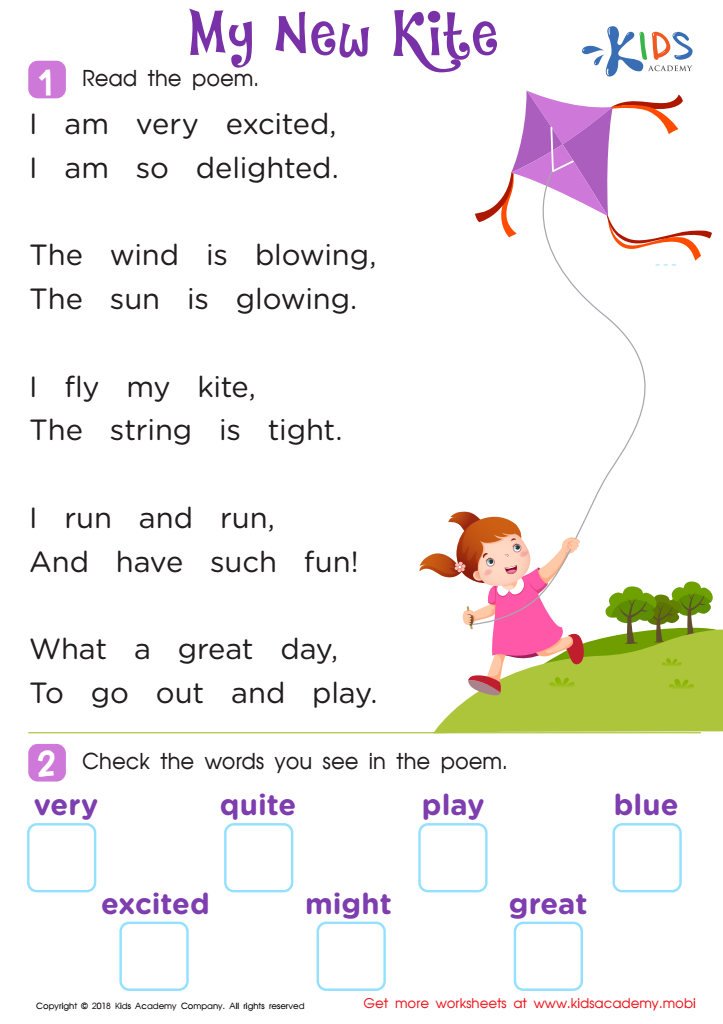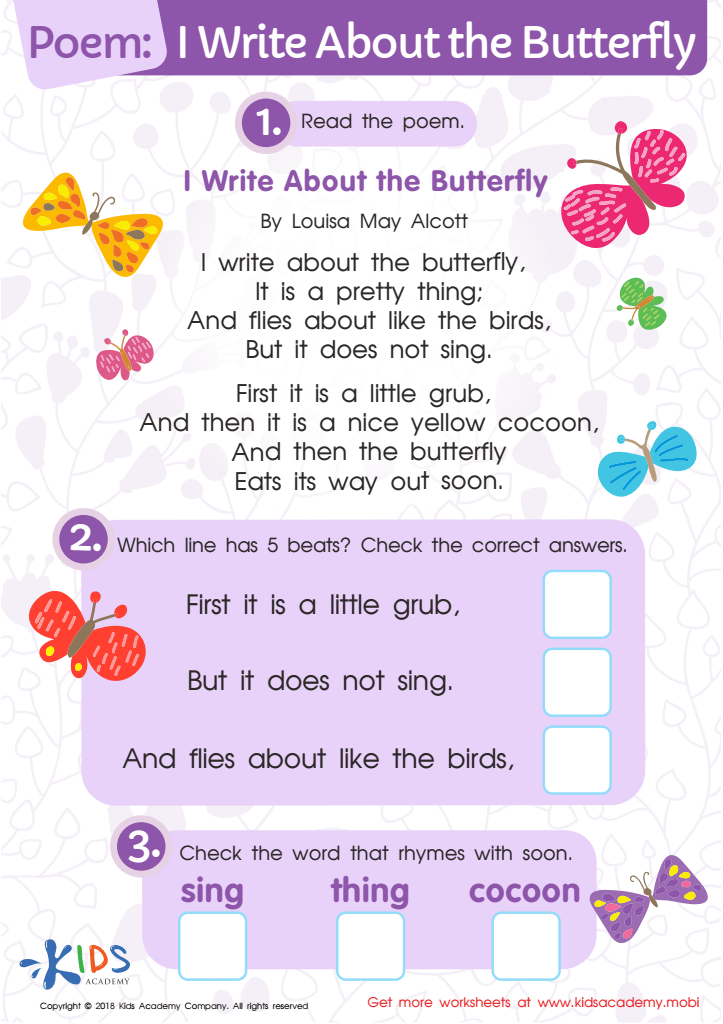Normal Songs and Poems Worksheets Activities With Answers for Ages 7-9
7 filtered results
-
From - To
Discover an engaging collection of "Normal Songs and Poems Worksheets Activities With Answers for Ages 7-9" designed to enhance your child's learning experience! Our worksheets promote creativity and literary skills through entertaining songs and poems, tailored to the interests of younger learners. Each activity is carefully crafted to foster comprehension, rhythm, and rhyme appreciation, while ensuring a fun-filled educational journey. With answer keys provided, parents and teachers can easily assess progress and understanding. This resource is perfect for classroom use or home study, making literacy enjoyable at any time. Encourage your child's love for reading with our interactive worksheets today!


Rhymes in Poems Worksheet


Poem: My New Kite Worksheet


Baa Baa Black Sheep: Vocabulary Worksheet


Poem: The Swing Worksheet


Rhyme In Poetry Worksheet


Poem: I Write About The Butterfly Worksheet


Poem: Cats and Dogs Worksheet
Normal Songs and Poems Activities for ages 7-9 can be essential for parents and teachers for several reasons. First, music and poetry are powerful tools for fostering language development. Through these activities, children enhance their vocabulary, improve pronunciation, and develop grammatical understanding in a fun and engaging manner. This active participation supports cognitive development, reinforcing memory through rhythm and rhyme.
Additionally, songs and poems introduce cultural themes, emotional expression, and storytelling, helping children to explore their feelings and understanding of the world around them. These activities also promote listening skills and encourage participation, which can be especially beneficial for children during this developmental stage, where social and emotional learning is crucial.
Furthermore, incorporating these activities in a classroom or home setting encourages creativity, as children learn to express themselves artistically. Group singing or reciting poems helps build confidence and creates a sense of community.
Ultimately, Normal Songs and Poems Activities serve as versatile educational tools that not only entertain and inspire joy but also lay the foundation for literacy, emotional intelligence, and critical social skills, making them vital for holistic development in children aged 7-9.
 Assign to My Students
Assign to My Students




















